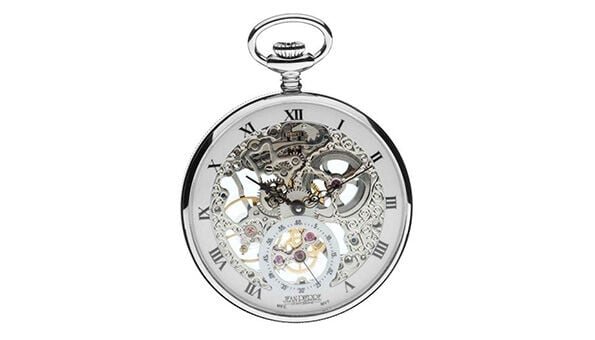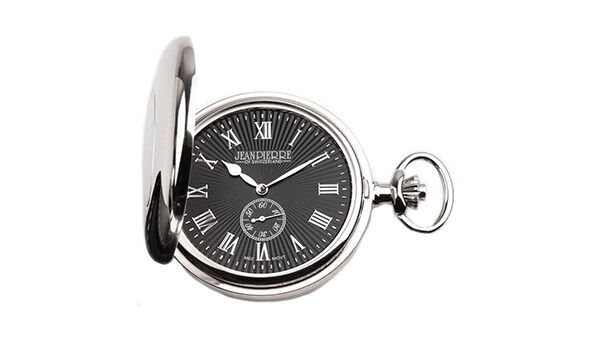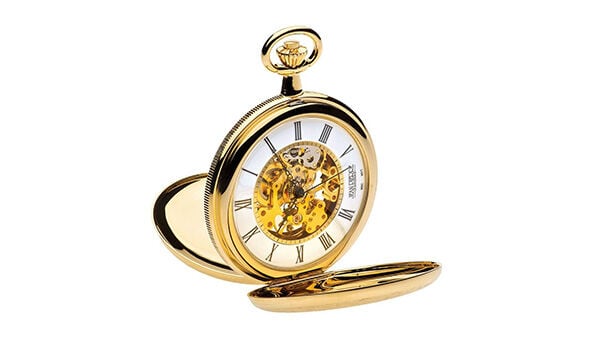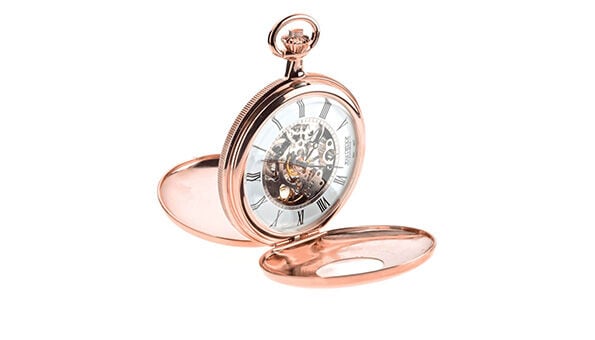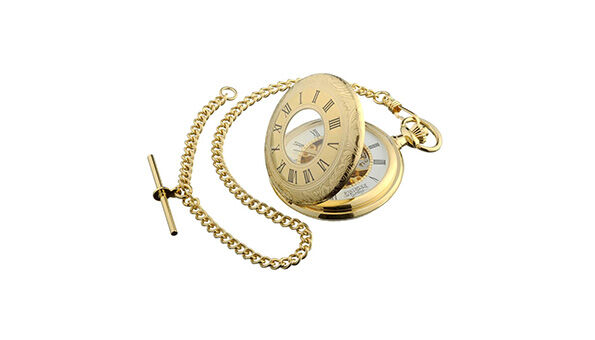The Pocket Watch:
Its Origins and Everything You
Need to Know
A pocket watch, as the name implies, is a timepiece designed to be carried in the pocket, distinguishing it from the more common wristwatch worn on the wrist.
Origins of the Pocket Watch
The pocket watch was invented in 1510 by Peter Henlein, a master locksmith from Nuremberg, Germany. Henlein continued to produce these watches through the 16th century, and the practice soon spread across Europe.
Historical Significance
In the 15th century, pocket watches were a status symbol, used primarily by craftsmen and the upper class. Early prototypes were worn around the neck rather than in a pocket, often with a chain. Notable figures such as the Duke of Modena and the Marchese di Manta were among the early adopters of these designs.
The invention of the pocket watch addressed the need for a portable time-telling device that did not rely on a fixed power source. Early models were powered by mainsprings and featured brass lids instead of glass screens. Although not entirely accurate at first, the introduction of the lever escapement and minute hand improved their precision.
Social and Cultural Impact
In the early years, owning a pocket watch was a sign of social status and wealth. These watches were often passed down as family heirlooms, regardless of whether they were made of silver, gold, brass, or platinum. Wealthy individuals flaunted their status through their pocket watches, while the less affluent often inherited them or received them as gifts.
Design and Functionality
Pocket watches are typically attached to a chain, securing them to a lapel, belt loop, or waistcoat to prevent loss or theft. Early versions were worn around the neck for security. In addition to chains, pocket watches could be mounted on short leather straps or fobs, sometimes featuring protective flaps to prevent damage. Some also included practical gadgets like winding keys or cigar cutters.
Types of Pocket Watches
There are five main types of pocket watches, each with unique characteristics:
1. Open-Face Pocket Watch (Lepine):
These watches lack a metal cover, allowing the time to be read without obstruction. Common in modern times, they were less popular in the past due to the fragility of porcelain faces.
An excellent example of an open-face pocket watch is this Jean Pierre Open Face Silver Pocket Watch, which combines classic design with modern durability.
2. Full Hunter Pocket Watch:
These watches have an ornately engraved outer casing with initials or images, though the need to open the cover to check the time led to the development of the half hunter design.
A notable example of a full hunter pocket watch is this Jean Pierre Full Hunter Chrome Plated Black Dial Pocket Watch, which showcases intricate craftsmanship and timeless elegance.
3. Double Hunter Pocket Watch
Similar to the full hunter, but with lids on both the front and back, allowing the mechanical movements to be viewed and the watch to stand on its own.
A great example of a double hunter pocket watch is this Jean Pierre Gold Plated Double Hunter Pocket Watch, which elegantly displays its intricate inner workings while offering a luxurious and functional design.
4. Double Half-Hunter Pocket Watch:
Combining features of the double hunter and half hunter, these watches have front and back lids with a window in the front lid to view the time without opening it.
An excellent representation of a double half-hunter pocket watch is the Jean Pierre Rose Gold Plated Double Half Hunter Watch, which blends elegant design with practical functionality, allowing the time to be read at a glance while protecting the watch face.
5. Demi or Half-Hunter Case Pocket Watch:
Featuring a lid with a glass panel or hole in the centre, these watches allow for a quick glance at the time without opening the cover like this design from Jean Pierre: a Gold Plated Half Hunter Skeleton Pocket Watch, which combines easy readability with an elegant and intricate design.
Decline and Resurgence
The popularity of pocket watches declined around 1943 when wristwatches became more practical, especially during wartime. However, there was a brief resurgence in the 1970s and 1980s as men began to incorporate them into formal attire once again.
Today, while pocket watches are not as common, they are still valued by collectors and those who appreciate their historical and aesthetic significance.
Buying Advice for Pocket Watches
An important consideration when buying a pocket watch is how to ear a pocket watch or what you’re going to be wearing it with. After all, it needs to be carried, or somehow attached to you, and you’ll want a watch that complements your overall style.
The optimum size and weight will be dictated by your clothes. Do you plan to slip it into a waistcoat pocket – if so, how big and sturdy is the pocket? Or would that interfere with the line of your clothes? Perhaps it would look better hanging down from a belt loop, in which case you might want a lighter-weight watch case? How long should the chain be, or would you prefer to pair it with a fob of leather or some other material? A fine chain is dressier, but something more solid might be safer for day-to-day activities.
Modern buyers often opt for silver, which goes well with most colour combinations, is resilient, and has a nice sheen, but gold, steel, and brass are also possibilities.
The caseback on a pocket watch offers a great canvas – engraved with a personal message, it makes a fabulous gift!

